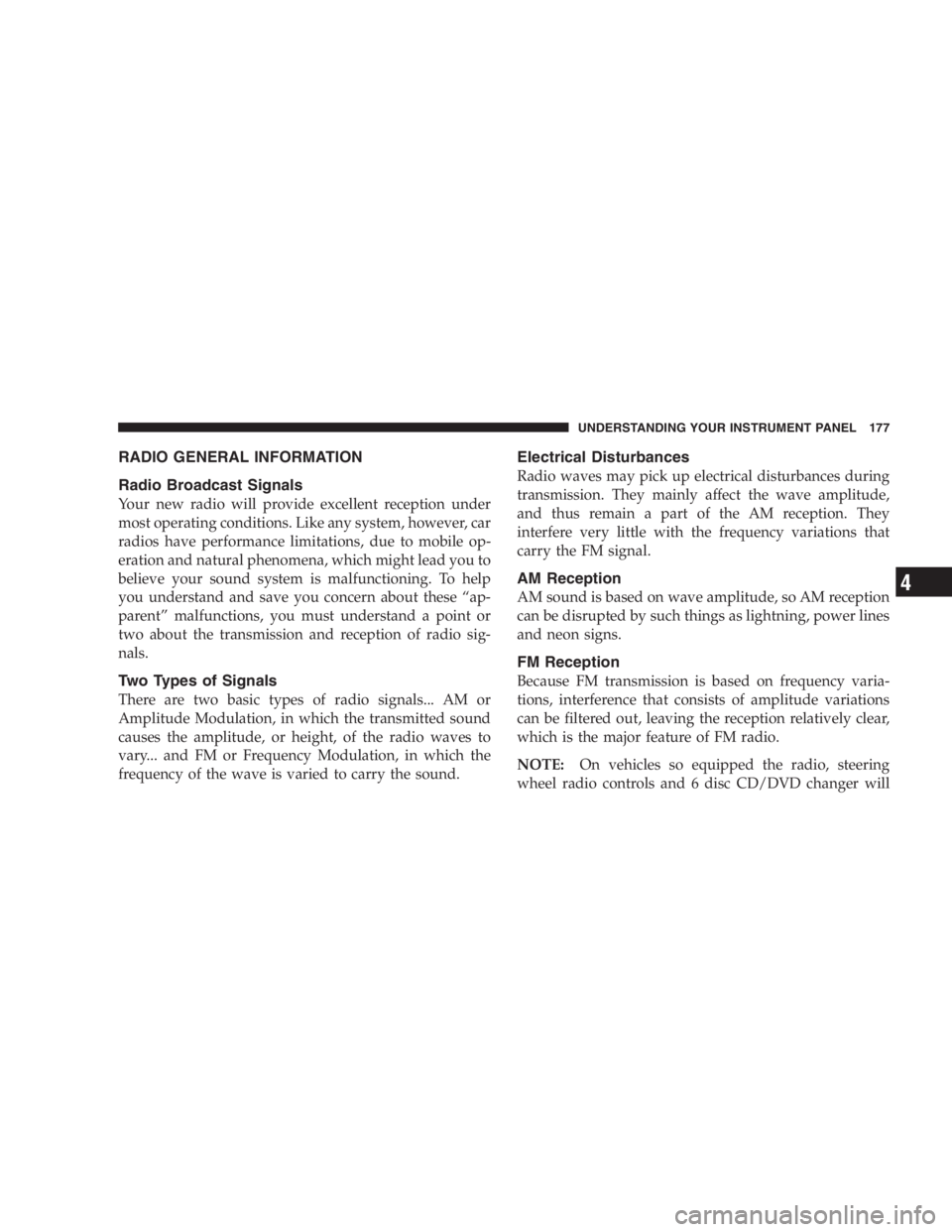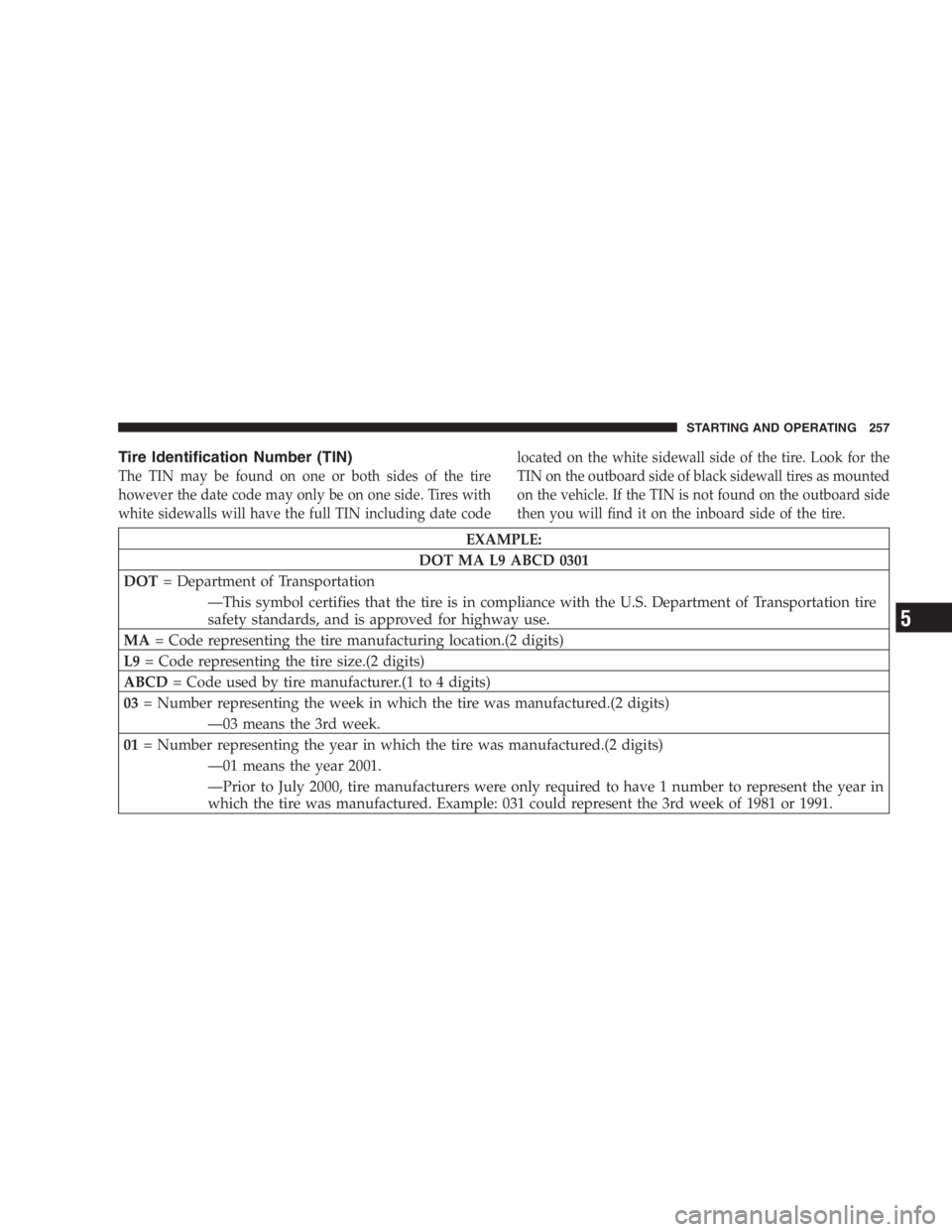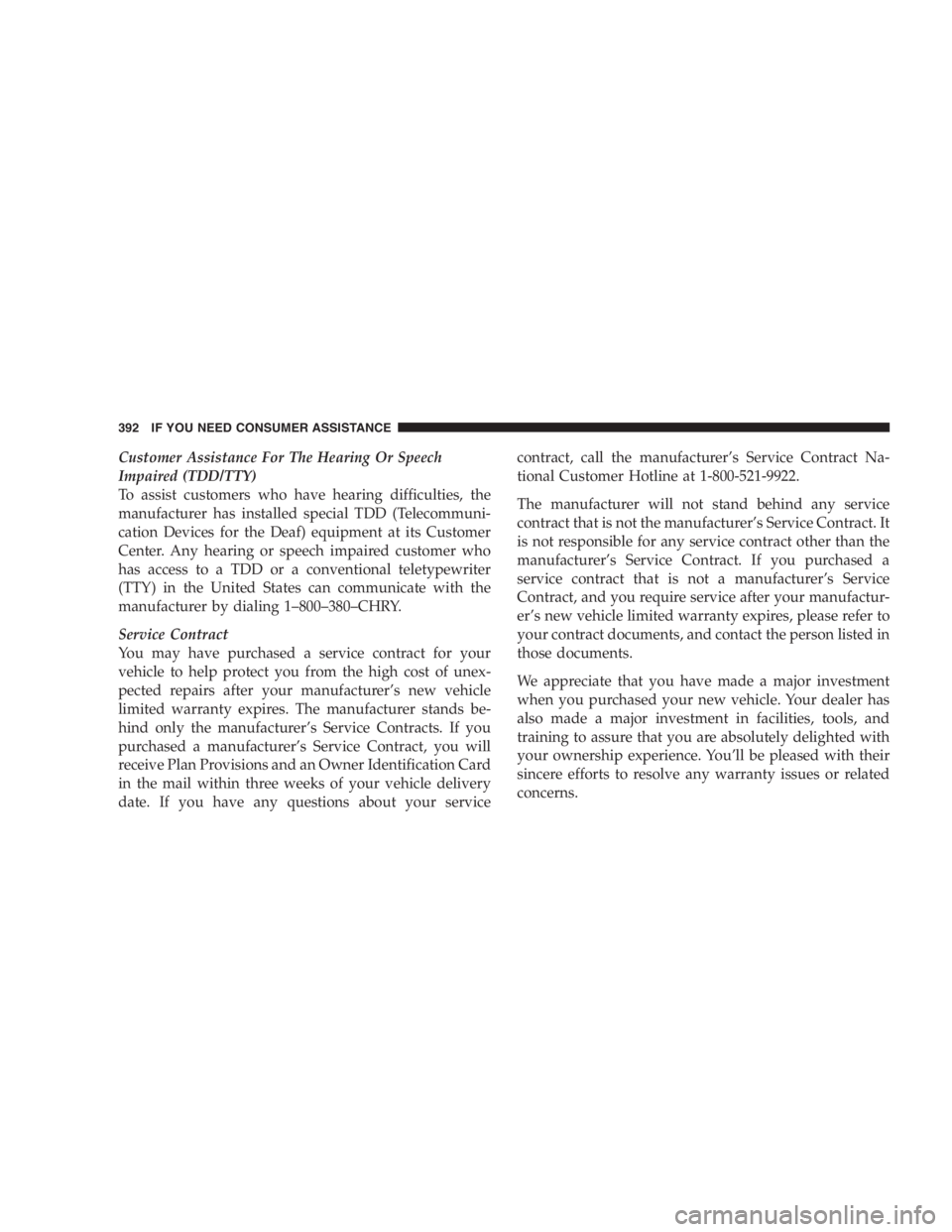JEEP LIBERTY 2005 Owners Manual
LIBERTY 2005
JEEP
JEEP
https://www.carmanualsonline.info/img/16/56001/w960_56001-0.png
JEEP LIBERTY 2005 Owners Manual
Page 2 of 1272
Airbag System Components
The airbag system consists of the following:
ŌĆóOccupant Restraint Controller
ŌĆóRemote Acceleration Sensors
ŌĆóAirbag Warning Light
ŌĆóDriver Airbag
ŌĆóPassenger Airbag
ŌĆóWindow Bags above Side Windows (If Equipped)
ŌĆóSteering Wheel and Column
ŌĆóInstrument Panel
ŌĆóInterconnecting Wiring
ŌĆóKnee Impact Bolsters
ŌĆóFront Acceleration Sensors
52 THINGS TO KNOW BEFORE STARTING YOUR VEHICLE
Page 87 of 1272
Overloading of your tires is dangerous. Overloading
can cause tire failure, affect vehicle handling, and
increase your stopping distance. Use tires of the
recommended load capacity for your vehicle. Never
overload them.
Improperly inflated tires are dangerous and can
cause accidents.
ŌĆóUnder inflation increases tire flexing and can
result in tire failure.
ŌĆóOver inflation reduces a tireŌĆÖs ability to cushion
shock. Objects on the road and chuck holes can cause
damage that results in tire failure.
ŌĆóUnequal tire pressures can cause steering prob-
lems. You could lose control of your vehicle.
ŌĆóOverinflated or under inflated tires can affect
vehicle handling and can fail suddenly, resulting in
loss of vehicle control.
Always drive with each tire properly inflated.
Page 177 of 1272
Airbag System Components
The airbag system consists of the following:
ŌĆóOccupant Restraint Controller
ŌĆóRemote Acceleration Sensors
ŌĆóAirbag Warning Light
ŌĆóDriver Airbag
ŌĆóPassenger Airbag
ŌĆóWindow Bags above Side Windows (If Equipped)
ŌĆóSteering Wheel and Column
ŌĆóInstrument Panel
ŌĆóInterconnecting Wiring
ŌĆóKnee Impact Bolsters
ŌĆóFront Acceleration Sensors
52 THINGS TO KNOW BEFORE STARTING YOUR VEHICLE
Page 257 of 1272
Before moving the shift lever out of P (Park), you must
turn the ignition from LOCK to ON so the steering
wheel and shift lever are released. Otherwise, damage
to the steering column or shifter could result.
Do not coast in N (Neutral) and never turn off the
ignition to coast down a hill. These are unsafe
practices that limit your response to changing traffic
or road conditions. You might lose control of the
vehicle.
Page 317 of 1272
Airbag System Components
The airbag system consists of the following:
ŌĆóOccupant Restraint Controller
ŌĆóRemote Acceleration Sensors
ŌĆóAirbag Warning Light
ŌĆóDriver Airbag
ŌĆóPassenger Airbag
ŌĆóWindow Bags above Side Windows (If Equipped)
ŌĆóSteering Wheel and Column
ŌĆóInstrument Panel
ŌĆóInterconnecting Wiring
ŌĆóKnee Impact Bolsters
ŌĆóFront Acceleration Sensors
52 THINGS TO KNOW BEFORE STARTING YOUR VEHICLE
Page 392 of 1272
Tilting the steering column while the vehicle is
moving is dangerous. Without a stable steering col-
umn, you could lose control of the vehicle and have
an accident. Adjust the column only while the ve-
hicle is stopped. Be sure it is locked before driving.
Page 497 of 1272
Before moving the shift lever out of P (Park), you must
turn the ignition from LOCK to ON so the steering
wheel and shift lever are released. Otherwise, damage
to the steering column or shifter could result.
Do not coast in N (Neutral) and never turn off the
ignition to coast down a hill. These are unsafe
practices that limit your response to changing traffic
or road conditions. You might lose control of the
vehicle.
Page 527 of 1272
Overloading of your tires is dangerous. Overloading
can cause tire failure, affect vehicle handling, and
increase your stopping distance. Use tires of the
recommended load capacity for your vehicle. Never
overload them.
Improperly inflated tires are dangerous and can
cause accidents.
ŌĆóUnder inflation increases tire flexing and can
result in tire failure.
ŌĆóOver inflation reduces a tireŌĆÖs ability to cushion
shock. Objects on the road and chuck holes can cause
damage that results in tire failure.
ŌĆóUnequal tire pressures can cause steering prob-
lems. You could lose control of your vehicle.
ŌĆóOverinflated or under inflated tires can affect
vehicle handling and can fail suddenly, resulting in
loss of vehicle control.
Always drive with each tire properly inflated.
Page 596 of 1272

Riding the brakes can lead to brake failure and
possibly an accident. Driving with your foot resting
or riding on the brake pedal can result in abnormally
high brake temperatures, excessive lining wear, and
possible brake damage. You wouldnŌĆÖt have your full
braking capacity in an emergency.
Brake and Power Steering System Hoses
When servicing the vehicle for scheduled maintenance,
inspect surface of hoses for evidence of heat and me-
chanical damage. Hard and brittle rubber, cracking, tears,
cuts, abrasion, and excessive swelling suggest deteriora-
tion of the rubber. Particular attention should be made to
examining those hose surfaces nearest to high heat
sources, such as the exhaust manifold.Inspect all hose clamps and couplings to make sure they
are secure and no leaks are present.
NOTE:Often fluids such as oil, power steering fluid,
and brake fluid are used during assembly plant opera-
tions to ease the assembly of hoses to couplings. There-
fore, oil wetness at the hose-coupling area is not neces-
sarily an indication of leakage. Actual dripping of hot
fluid when systems are under pressure (during vehicle
operation) should be noted before hose is replaced based
on leakage.
NOTE:Inspection of brake hoses should be done when-
ever the brake system is serviced and every engine oil
change.
MAINTAINING YOUR VEHICLE 331
Page 607 of 1272
Under frequent heavy-duty driving conditions,
change all lubricants and lubricate body compo-
nents, all driveline joints and steering linkage more
often than in normal service to prevent excessive
wear.









